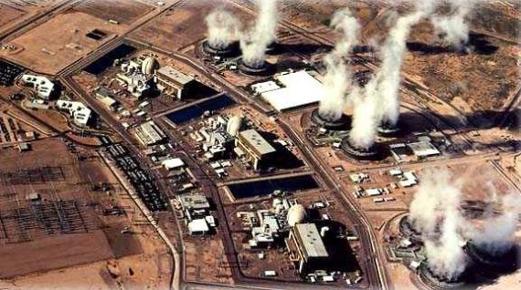What are the considerations for water use?
The proposed Blue Castle Project would increase the electricity generated in Utah by approximately 50%, adding about 3,000 megawatts of installed electrical capacity, using less than 1% of Utah's current water diversion, and with a very favorable state-wide economic impact.
World Nuclear Association - Cooling Power Plant PDF Document - (Compares water use in different types of power plants)
Blue Castle Project Water Use And Key Economics Study PDF Document
Nuclear power uses approximately the same amount of water for cooling as coal fired power plants. The use of cooling water by power plants preserve the water rights of conservancy districts for future uses by proving beneficial use. Beneficial use is required by state law to preserve a water right. After a nuclear power plant has run its useful life of approximately 60 to 80 years, the water rights used by the plant can then be used for other water needs by the population at that time.
The Blue Castle site is well suited for a new nuclear power plant. The Upper Colorado River Basin is a place where Utah needs to put water to use. Utah currently has about 360,000 acre feet annually of unused water in this area. A large portion of this unused water is held by multiple county water conservancy districts who have been trying to put the water to use since the mid 1960's to conserve water rights.
The Blue Castle Project has leased water rights for 53,600 acre feet per year, already approved by the Utah State Division of Water Rights for coal fired power plants. These coal plants were never built and years later the water remains unused.
 Mechanical Draft Cooling at a Nuclear Power Plant Mechanical Draft Cooling at a Nuclear Power Plant
Data records for flow at the USGS Gauging Station at Green River, UT provided the following information on flow in the Green River approximately three miles upstream of the site:
-
Highest Daily Mean Discharge = 66,700 cfs (June 27, 1917)
-
Lowest Daily Mean Discharge = 380 cfs (December 5, 1934)
-
Annual Average Discharge = 6,071 cfs
-
Highest Annual Average Discharge = 12,280 cfs (1907)
-
Lowest Annual Average Discharge = 1,805 cfs (1934)
Nuclear plant vendors estimate that the makeup water requirement is in the 60 - 90 cfs range. Therefore, withdrawal requirements for a two-unit plant at the site would be a small fraction of the historical low flow in the Green River, and even a smaller portion of the median flow. There is more than enough water available from the Green River to support several nuclear power plant units and other planned uses. (See Deseret News story from 11/27/13 "Judge upholds state engineer's decision on nuclear power plant water").
The statements above show that utilizing the water rights for new nuclear power plants would be beneficial to the water right holder and the State. In essence, these actions will utilize the State water appropriately and preserve the water right for Utah's needs in the future. When the plant is done using the water rights in about 60 to 80 years, the water will return to these conservancy districts for use as they deem fit.
|
